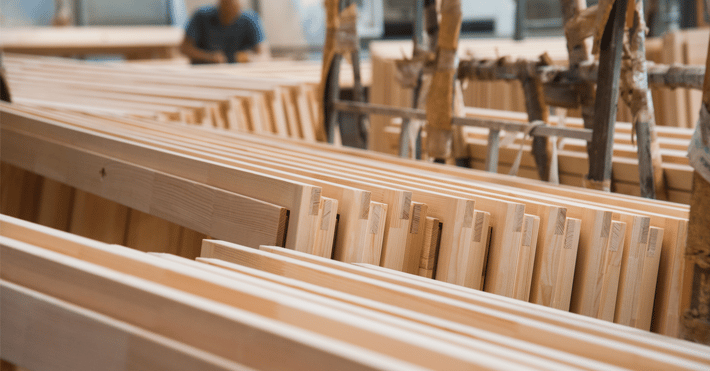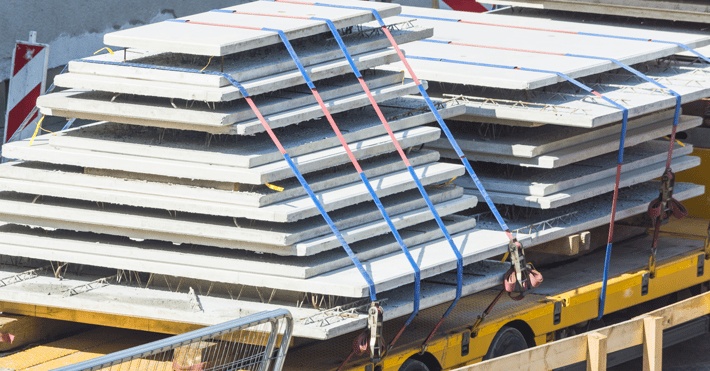Congratulations Wan Teing Chua
Wan Teing Chua, Associate Director - Infrastructure We're excited to announce the recent promotion of Wan Teing Chua to Associate Director with our Infrastructure team. Wan Teing j.....
Read More →Wan Teing Chua, Associate Director - Infrastructure We're excited to announce the recent promotion of Wan Teing Chua to Associate Director with our Infrastructure team. Wan Teing j.....
Read More →Get the latest trends and brand updates delivered straight to your inbox.
Media Contact:
Laura Davies
+61 402 456 902
Laura.Davies@dcwc.com.au
After recently undergoing the layout, design and ordering process for a new kitchen, I was struck by how the joinery industry is a microcosm – and a possible road map - for prefabrication more widely in the construction industry.
Joinery shops don’t normally describe themselves as adopting Modern Methods of Construction (MMC), nor do they promote how they are in the modular or prefab business.
But when you break it down, that is exactly what they are doing – and with a great deal of sophistication. So much so that they could teach their bigger customers – including the builders and manufacturers actively involved in prefab construction - a few lessons in efficiency.
All things considered, just about any kitchen is made up of a series of standard “boxes” (or carcasses as the joiners, unfortunately, call them). For fully 99% of all kitchens, there is no combination of layout or design that isn’t fundamentally made up of a combination of just four ”box” sizes. Ignoring the 1% “bespoke” designs, all kitchen cabinets are 600mm deep. With a palette of just four box widths – 300mm; 450mm; 600mm and 900mm – there is no possible layout that can’t be accommodated to within 150mm. New kitchens can have their critical wall dimensions tweaked to suit. Renovations can, worst case, adopt a ‘blank’ to infill any annoying gap leftover (and trust me, despite the agonising over maximising space, once the kitchen is installed, a matching blanking piece a few inches wide, will ‘disappear’ and never be considered again).
With three variations on these standard box widths to accommodate corner cabinets; overheads and full-height (fridge openings; pull-out pantry’s etc), the kitchen is done. Four boxes; three variations – and 99% of every conceivable kitchen layout is done.
Now the customer can overlay the endless combinations of door finishes; benchtops; handles and splashbacks and a “custom” kitchen is guaranteed for all. All using the rigidly defined four-width / three variation combination.
Looking ‘under the hood’ of a modern joinery shop is a joy for any efficiency nerds in the construction industry. Comparing the shop to an advanced manufacturing business in any other industry, less so. The exciting thing is to think the construction industry can learn so much from one of its own supply chain partners; and yet those suppliers can still learn so much more from other industries. Let’s consider for a moment what an advanced joinery shop could look like.

Ask any child how many sides there are on their Monopoly dice. Six. Just like the sides of a joinery carcass. When it’s broken down, that is all there is to it – six pieces of timber, with some mechanisms for joining them together. The trick of course is to make sure that the way each piece is machined is exactly right – that the side piece marries up with the top piece and the bottom, every single time.
Joinery shops have invested heavily in CNC (Computer Numerical Control) machinery, the design expertise, and software to drive them, and the factories to house them. These investments need constant throughput in the factory to pay for the commitment. Levelling these workflows allows the factory to run efficiently. Peaks and troughs in work orders kill factory efficiency.
This explains why there is always a six-to-eight-week lead time on getting joinery made. Making your kitchen only takes a few hours – slotting it into the ideal ‘trough’ in the factories' pipeline of work is the key.
In a busy joinery shop, there are multiple machines set out to cut board to size; route and drill holes for hinges and shelves; and edge-band the raw cuts into a finished board.
Workstations are set up to take each of the finished boards and assemble them into carcasses of various sizes. Hinges, handles, and hardware of all sorts are attached. Doors, drawers, and shelves are attached. The boxes are protected and packed for transport and will eventually meet up with the other boxes at the job site, where they are joined together, benchtops and splashbacks are installed, and the new kitchen is ready for cooking.
It is an efficient and cost-effective process in a commercially competitive marketplace.
Suppose for a moment that one of the joinery shops – let's call them Joinerz - start to get particularly busy. They explore the options for expanding the factory into the unit down the street, (but not sure how long the peak demand will last; logistics of two factories) and double-shifting the factory (penalty rates and management capacity issues).
They also look at the possibility of outsourcing. They talk to a number of smaller shops who have the capacity to make carcasses on Joinerz behalf. On closer inspection, the boxes from each of these fabricators are slightly different, and would pose interface problems when attempting to join an outsourced box to their own system on site.
It is quickly established that most of the smaller shops have no problem accepting a CNC file from Joinerz, ensuring that each carcass, irrespective of where it comes from, is identical.
When the discussion turns to pricing, a couple of things jump out:
So Joinerz signed up six smaller shops to produce their basic carcasses – two each for the more popular 600mm and 900mm boxes, and two to do both the 300mm and the 450mm specials. They maintained their high-end finishing equipment, and the machines to produce odd-sized and bespoke carcasses. They also maintained some in-house capacity to produce the standard boxes, but freed up most of the space previously given over to carcass production, and optimised the layout for final assembly – making and fitting of doors and drawers; attaching the hardware; and packing for transport. In-factory defects dropped significantly, as did deliveries to the wrong site.
Joinerz were getting quality product on a regular basis from the six shops, all at a price lower than their internal cost to produce. The smaller joiners were happy with a steady flow of work, all at better margins.
A delivery truck driver noticed she was regularly picking up pallets of white boxes from a small joinery shop in her area. From her observations the shop seemed to be in a constant state of turmoil, with staff screwing boxes together; then shrink wrapping them to pallets on the floor, and always struggling to manoeuvre their walk-along forklift thru the pallets to load her truck.
She also noticed that when she dropped off the pallets at Joinerz, things were a bit better – but not much. No one ever seemed to know when a delivery was coming. Sometimes there were other trucks there, delivering pallets of white boxes also, and it took ages to get unloaded.
Being an enterprising young lady, each time she picked up and dropped, she asked a few more questions about what was happening.
Eventually, she mustered the courage to approach the boss at the small shop and ask if he ever considered sending pallets of flat boards to someone else to assemble. After a stunned silence, and a couple of long conversations, introductions were made to Joinerz, and in turn to other small shops, and our young delivery driver took a short-term lease on a little factory, and became the proud owner of carcass assembly and logistics business.
The small joinery shop owner, freed up from the trudge of assembling carcasses, wondered if he could expand his share of the fabrication work. With more space and time available, he thought about purchasing bigger and better machines. But no matter what way he sliced it, he couldn’t fit both the bigger panel saw and the new CNC milling machine into the shop, nor could he make the repayment numbers stack up. At the monthly networking event hosted by Joinerz, he got talking to one of his competitors, and between them, they quickly decided that if our small joinery shop could buy the panel saw, and the competitor could buy the milling machine, they could collectively produce far more product. The first shop could cut enough board for both. The second would concentrate on making the machining-intensive side panels. They approached Joinerz.
Sub-components would be delivered from two shops for assembly into one carcass by our young entrepreneur. Handling the supply, ownership, and payment seemed to be a nightmare waiting to happen. As it turned out, Joinerz had a relationship with the local University and one of the Co-Operative Research Centres, through which the company was supporting a PhD. At a presentation night at the Uni last year, the Operations Manager at Joinerz listened to presentations on the progress of all the PhD’s working with the CRC, and heard about how block-chain was transforming supply chains. Now in a eureka moment, the Ops Manager knew he could handle the physical identity of each panel with a simple QR code sticker, and appease all ownership and payment concerns by linking to simple block-chain contracts. Hands were shaken, and a new four-way supply deal was signed.

And so our joinery shop microcosm blossomed. But what can we deduce from the story?
Here we have a commercially competitive part of the bigger construction industry, breaking the rules on procurement; design I.P; ownership; payments; collaboration with customers and suppliers alike.
Is it really that big a leap to see these ideas taking hold at the project level?
To transfer the learnings from the joinery shop to a whole-of-building MMC supply chain, what do we need to consider?
DCWC acknowledges Aboriginal and Torres Strait Islander peoples as the First Peoples of this nation. We proudly recognise Elders past and present as the Traditional Owners of the lands on which we work and live.

© 2023 Donald Cant Watts Corke. All rights reserved | Privacy Policy